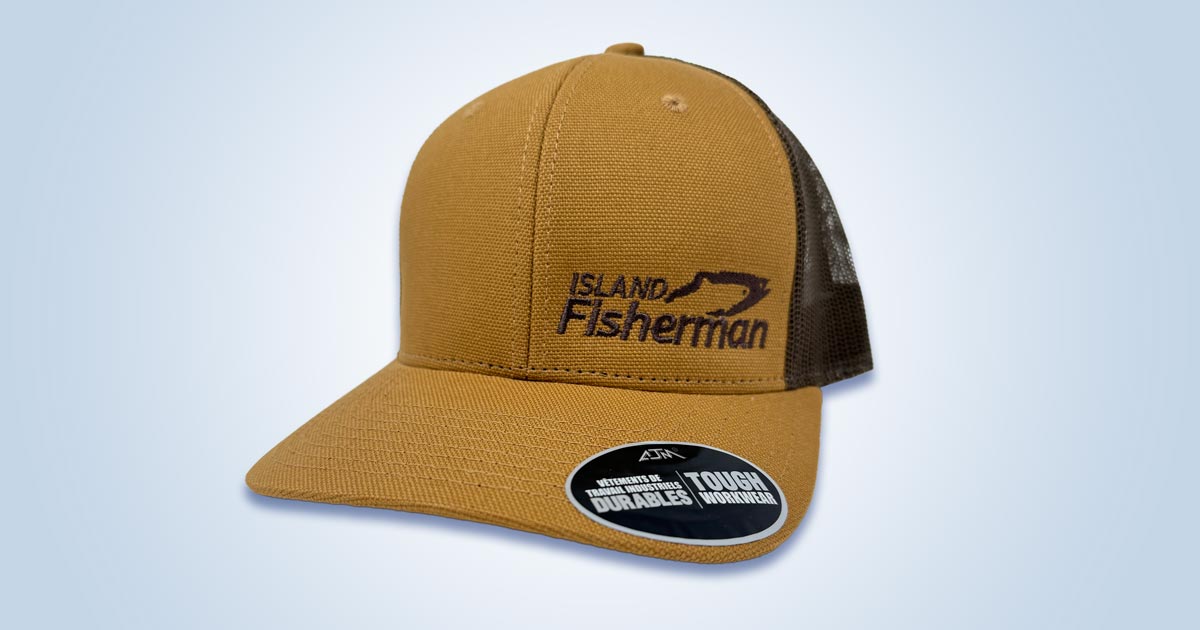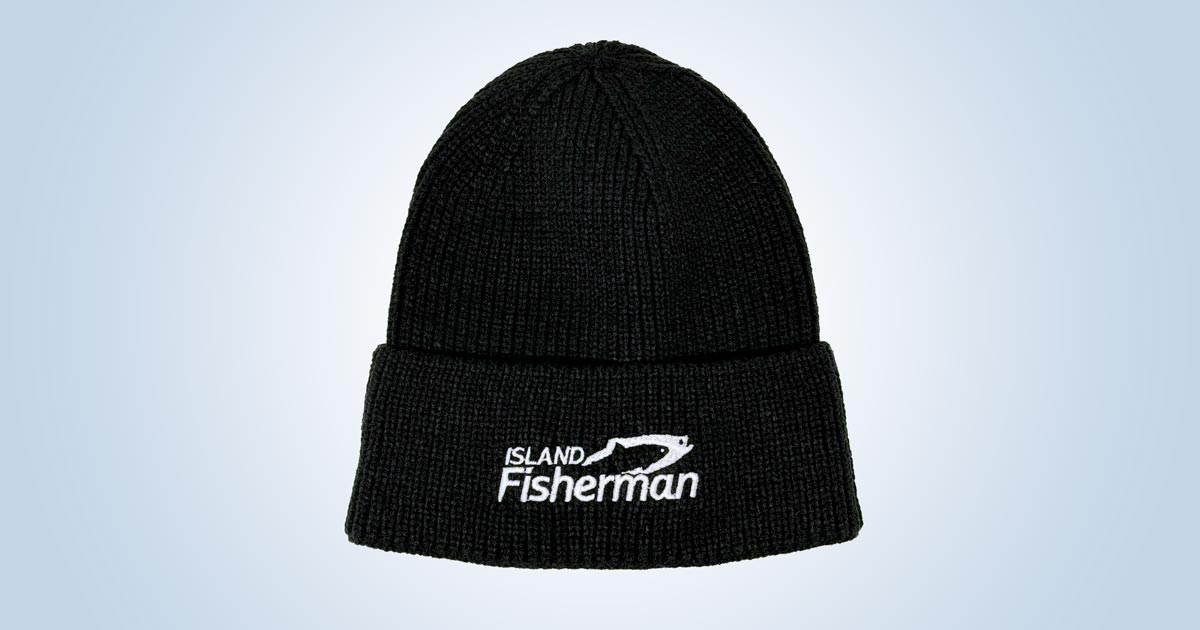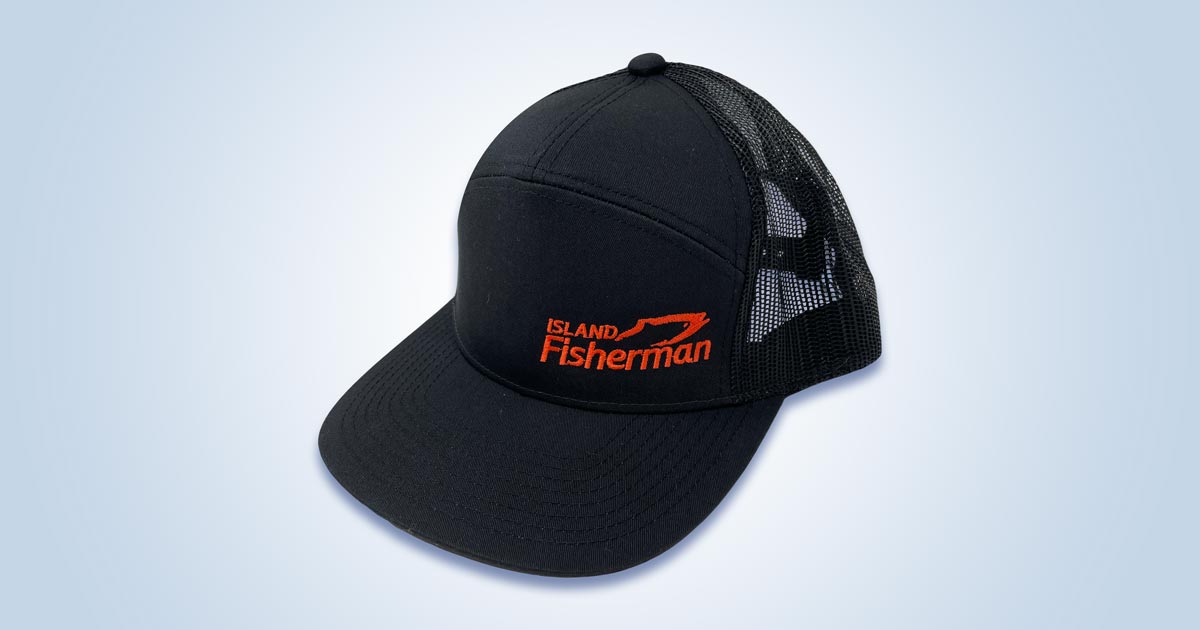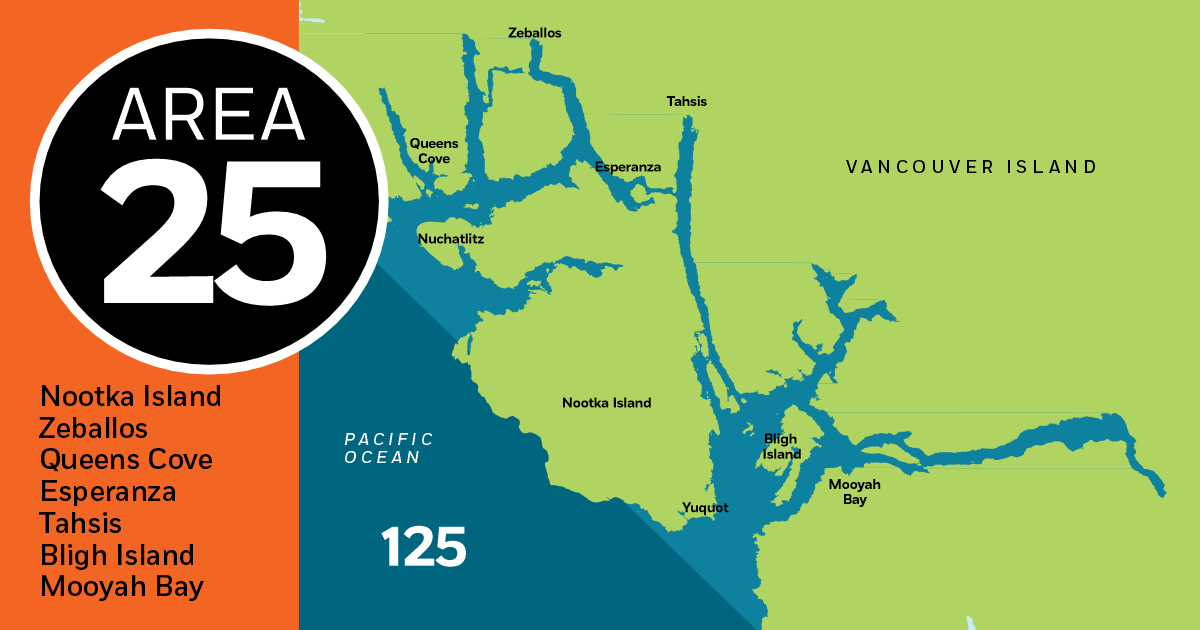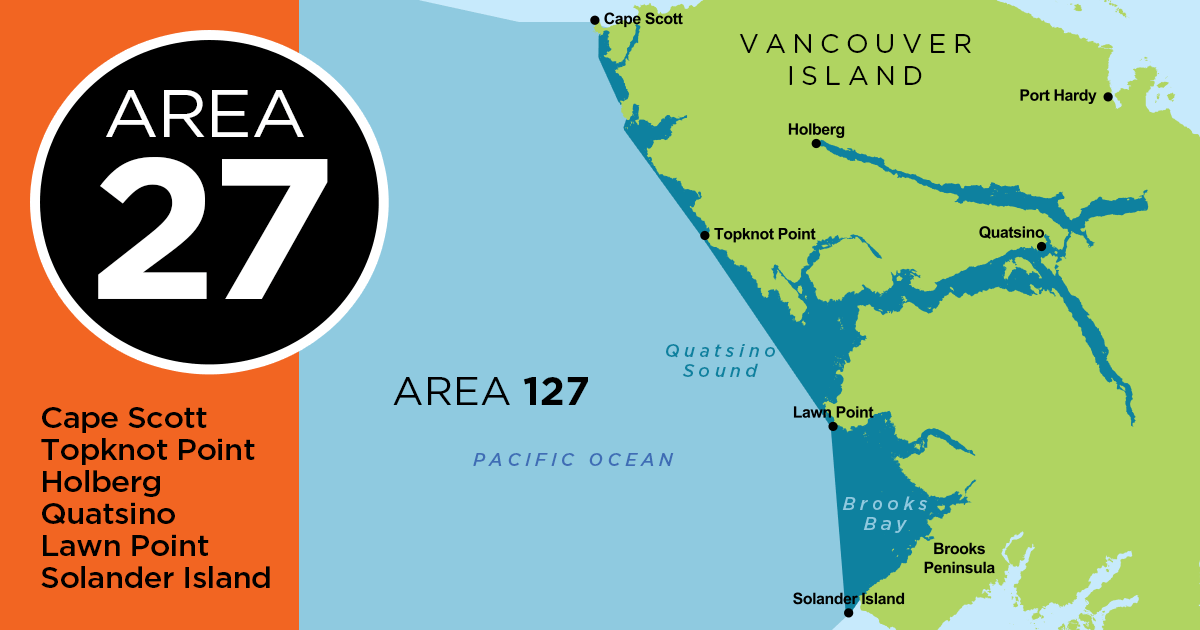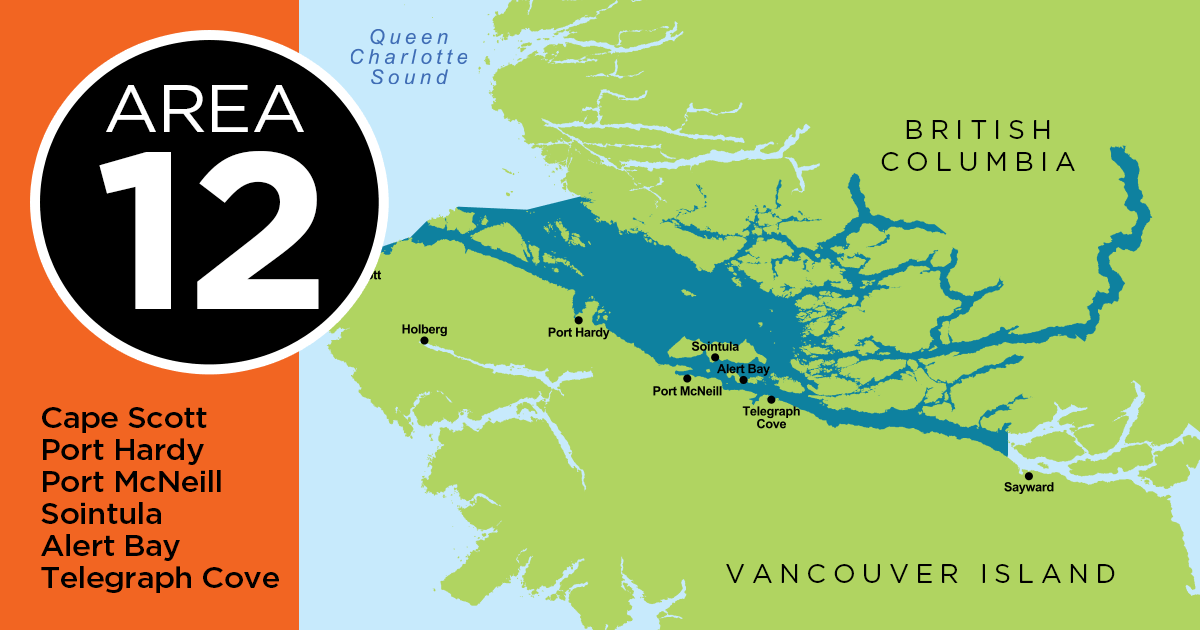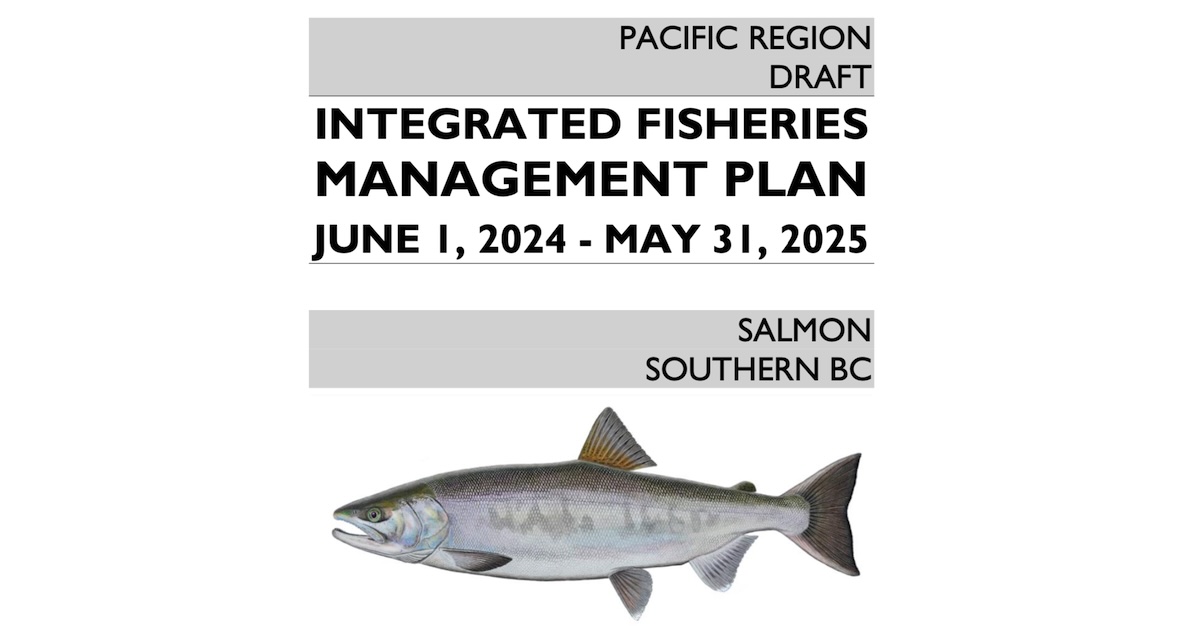
2024/2025 Draft Fisheries Plan Background
On February 13, 2024, the Department of Fisheries and Oceans (DFO) released the Northern and Southern BC Draft Integrated Fisheries Management Plans (IFMPs). These documents can be intimidating, not only because of the combined 1,072 pages, but by the contents.
Despite their complexity, IFMPs determine how BC’s fisheries will be conducted between June 1, 2024, and May 31, 2025. This information article will explain what these documents are, and how anglers can find key information about recreational fisheries.
In the DFO’s covering email, IFMPs “Set out a policy framework that guides decision-making and general objectives relating to the management of stocks of concern, enhancement and enforcement, as well as decision guidelines for a range of fisheries”.
Section 13 outlines Species Specific Fishing Plans for each of the salmon species, management units, and major fishing areas for the 2024/25 fishing year.
Consultation is an important component of the draft IFMP process. “DFO will consult with First Nations and recreational, commercial, and environmental groups to seek further feedback on the draft IFMPs as part of the consultation process.”
The DFO Pacific Management Team will receive comments on the draft IFMP by email until April 15, 2024. Comments may be provided in writing via email to the DFO Pacific Salmon Management Team at DFO.PacificSalmonRMT-EGRSaumonduPacifique.MPO@dfo-mpo.gc.ca
IFMP Background
According to DFO documents, IFMPs were first developed and used in the mid 1990’s. They are described as both a process, and a document.
IFMP Process
It might come as a surprise that the IFMP is actually a ‘nationally consistent’ template for fisheries in Canadian waters and is not just a tool used to develop west coast fishing plans.
The process allows for input from resource users to be combined with DFO scientific expertise. It must also take into account 1st Nation harvesting rights in land claim discussions, and already enshrined Food, Societal, and Ceremonial considerations to ensure legal requirements are met.
The IFMP process must satisfy the need to consult with all participants and consider the importance of economically viable, and socially beneficial sustainable fisheries.
IFMP Document
The document it is a reporting tool and source of information on fish, fisheries, and fisheries management, described by DFO as a “clear concise history of a fishery”.
It provides information on a wide range of topics including: Fishery history, fishery types (1st Nations, recreational, and commercial including gear types), fishery locations, special fishery characteristics, fishery governance, approval processes, stock assessment, science, traditional knowledge, biological assessments, ecosystem interactions, stock trends and the requirement to design fishing plans based on the “Precautionary Principle”.
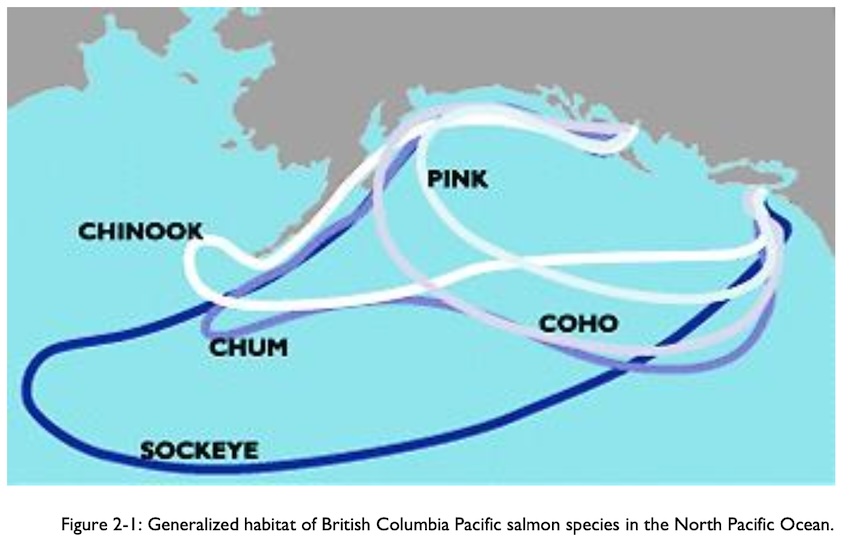
Northern salmon IFMP Draft 2024, Page 49
Navigating the Draft Northern & Southern BC IFMPs
Unless readers are resistant to self-inflicted abuse, there is an easier ‘roadmap’ to get through the mass of information, without losing your sanity. The Northern and Southern BC draft IFMPs contain a wealth of valuable information, and the preambles in both documents are essentially the same. The proposed changes to fishing plans are contained in Section 13: “Species Specific Salmon Fishing Plans”. Everything else in section 13, that is not highlighted, remains the same as the plans included in the previous IFMP.
Important information that provides context for IFMPs
However, there are other document sections, leading up to the proposed plans in Section 13, that are worth reading to understand factors that frame the management decisions in the IFMPs.
For example:
- Section 2.2 & 2.2.1-Ecosystem Interactions. This covers environmental factors affecting salmon survival and productivity.
- Section 3.2-Salmonid Enhancement Program. Review of enhancement activities to date. (The Southern BC IFMP is section 3.3).
- Section 3.5.1-Canada and First Nations Collaborative Agreements. These agreements influence all fishery related decisions.
- Section 3.6.4-Sport Fishing Advisory Board. Explains the SFAB process. (For the Southern BC IFMP it’s section 3.7.4).
- Section 4.2-Sport Fishing. Outlines the economic, cultural, and social benefits of recreational fishing.
- Sections 5.1, 5.1.1 & 5.1.2-Overarching policies that guide responses to management issues.
- Section 5.2.1-The Marine and Coastal Areas Conservation Mandate. It includes Marine Protected Areas.
For more information on Marine Protected areas (MPAs), see this article, here.

- Section 5.4.1 & 5.4.2-Killer Whales. Management measures to protect killer whales are substantially impacting major southern BC recreational fisheries.
- Section 7.1 to 7.2-Access and allocation objectives for each fishery. Allocation priorities are explained.
- Section 7.3.3 & 7.3.4-Selective fisheries and Fisheries Related Incidental Mortalities, or (FRIM). Having credible FRIM data is critical for properly managing recreational fisheries.
- Section 11 to 11.3.4-Recreational Fisheries. This is the major background section on recreational fisheries.
Section 13-Draft Species-Specific Salmon Fishing Plans
Here are the highlighted sections of the IFMPs where proposals have come forward to date re: recreational fishing plans. Regulations in the previous IFMPs, that are unaffected by proposals for change, will remain in effect unless in-season adjustments are required.
Northern BC IFMP 2024 (PDF link here)
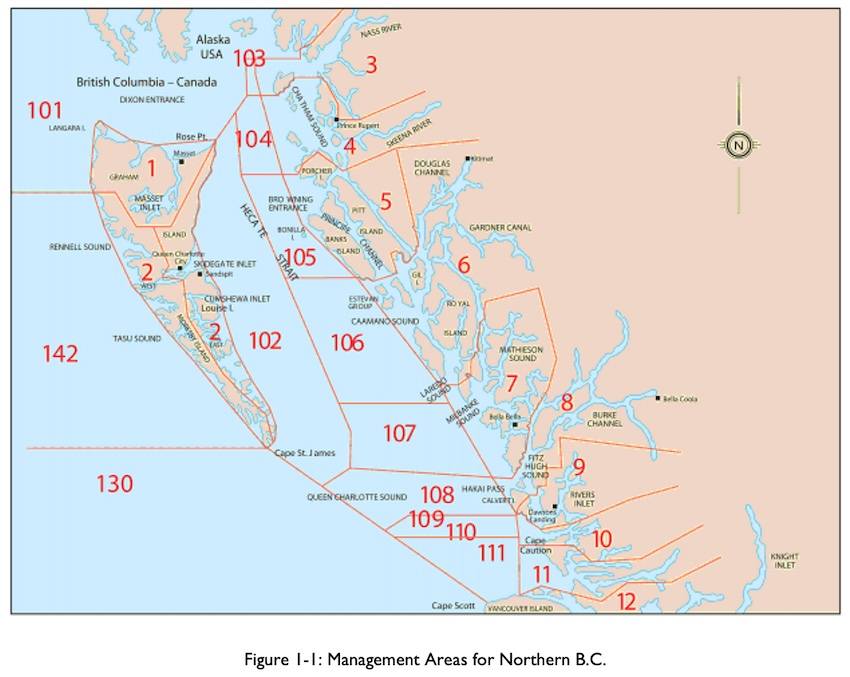
Northern BC Salmon IFMP Draft 2024, Page 35
- DFO is assessing a proposal to expand the Area 9 Salmon Management Zone boundary to provide more protection for Chuckwalla & Kilbella Chinooks. See page 233.
- DFO has received a proposal for the closure of all recreational fishing for all salmon species in Smith Inlet for the 2024/2025 IFMP period. See page 234.
- Central Coast 1st Nations have requested that DFO reduce recreational Coho limits by half in Areas 7 to 9. See pages 275-276.
- Triggers to open recreational Sockeye fisheries in the Skeena watershed are still being determined. See page 342.
- In-river sockeye anglers are seeking more opportunities in 2024. DFO is reviewing the current model to better align it with the Salmon Allocation Policy, provide more certainty for fisheries and earlier fishing opportunities. See page 343.
Southern BC IFMP 2024 (PDF link here)
Southern BC salmon stocks, distribution, runs, and dependent fisheries are extremely complex. Section 13 of the Southern BC IFMP reflects that complexity. The bullets listed below only reflect those 2024/25 proposed plans that are new and may impact recreational angling. There are no references in this article for pink salmon fisheries because 2024 in not a dominant Fraser River pink year.
In 2024 sockeye non-retention will be in effect for most south coast waters until run-size information becomes available that permits sockeye fishing to proceed.

Southern BC Salmon IFMP Draft 2024, Page 44
- Fraser steelhead runs are referenced on page 245 in the Southern BC IFMP because of their depressed stock status.
- DFO is considering the potential use of a mark selective fishery (MSF) regulation in Area 25. See page 259.
- Independent enhanced recreational monitoring (reference fishery) has been approved for 2024. See page 263.
- Fraser River Summer 5-2 Chinooks. This is an information update assessment and action review of these stocks. See pages 270-271.
- DFO is seeking feedback on measures to maintain fishing mortalities within 10-14% for weak stock Fraser Chinook. See page 285.
- DFO is seeking comments on reverting MSF regulations for Area 16 back to the mixed bag MSF regulations introduced in 2021. See page 294.
- DFO will be evaluating and consulting on management measures for Cowichan Chinook in portions of areas 17, 18 and 19. See page 297.
- Recreational and commercial salmon fisheries will start salmon fisheries with Chum non-retention in place. See pages 314, 331 & 372.
- DFO is considering increasing the Interior Fraser Coho exploitation rate above the current 3-5% range. See page 390.
- San Mateo Bay will be closed to recreational Sockeye retention from June 1 to October 31, 2024. See page 443.
- DFO is considering a creel survey for the non-tidal portion of the Stamp/Somass River. See page 449.
Visit the Store
$34.99
$34.99
Featured Catch
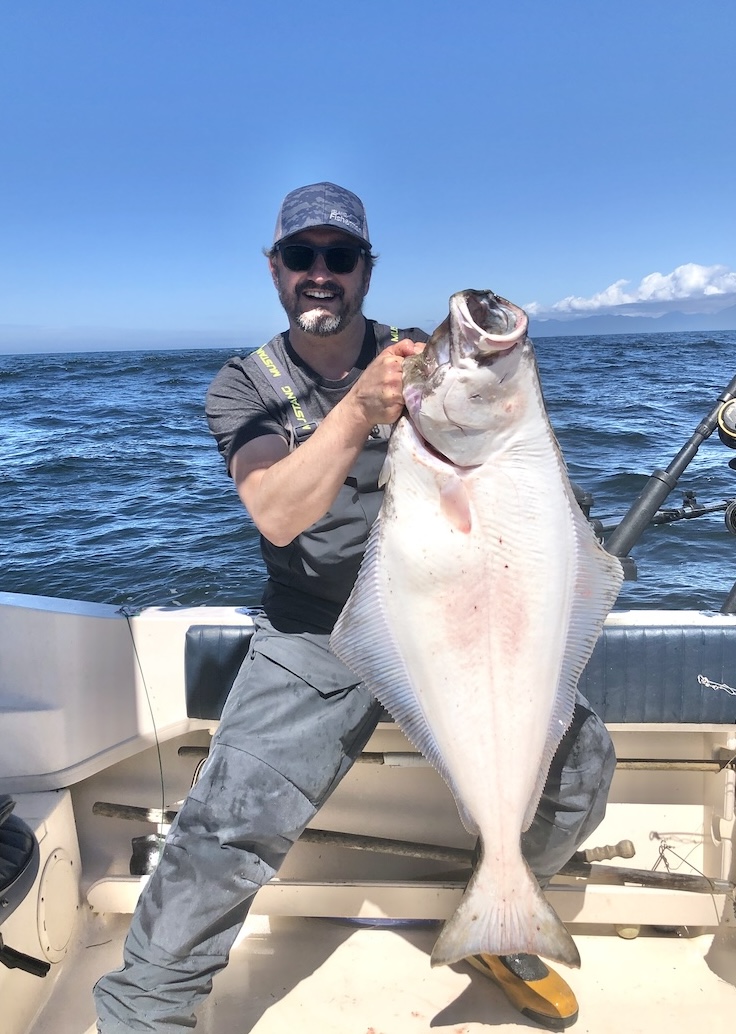
Joel Unickow halibut (Photo: Rob Frawley Lucky Strike Sportfishing Tofino)

